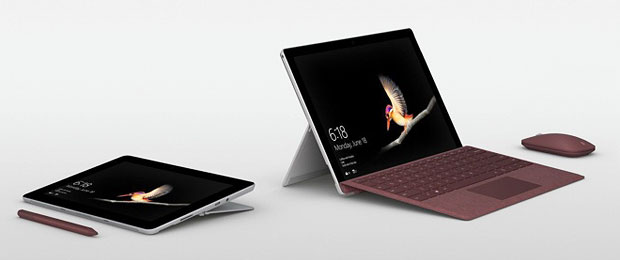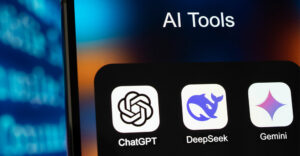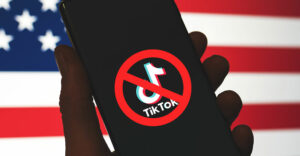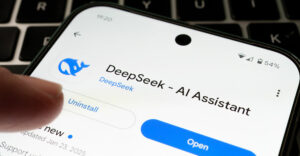Microsoft Inspire is taking place this week in Las Vegas, and a huge number of my personal friends and I were prebriefed on what the big announcements would be. Strangely, the embargo on the news lifted last week, so I’m not going to get in trouble for sharing some of the revelations.
There are a number of interesting elements, including Microsoft’s suddenly aggressive move to use Azure as an Internet of Things host, which suggests that in the future, many of our homes and businesses (at least their lights, HVAC and security) will be managed remotely in the Microsoft Cloud. Don’t get upset, as this is likely a ton better than what we are doing today. (Yes, there is something called “smart home abuse,” and it is a real threat.)
There will be a ton of Azure announcements during the week: new servers, a vastly more powerful Azure Global Network, business intelligence, and SQL. What caught my eye was a product that’s free (at least initially) — a new version of Microsoft Teams. I think Teams could be a foundational way to fix governments in general, with a little extra help from artificial intelligence.
I’ll explain and then close with my product of the week: a new 10-inch affordable Microsoft Surface Tablet with a Pentium Gold processor (Pentium was one of the most powerful brands every created).
Why I Don’t Like Collaboration Products
Let’s start with why collaboration products in general often leave me less than excited. My educational background was in business, with a focus on motivation and employee development. One of the things I learned early on is that no tool alone will force people to do something they don’t want to do, and if they really want to do something, the lack of a tool won’t stop them.
Over the years, programs like forced ranking pitted employees against each other, effectively discouraging collaboration. Companies like Microsoft have discontinued the programs, but the related behavior generally continues. In general, incentives like raises and bonuses not only are less common but also are tied to individual or corporate behavior rather than team behavior.
Few employees have the power to impact corporate results, and if you are competing with others for your bonus, raise or promotion, why would you collaborate with them? A tool like Microsoft Teams, alone, can’t fix that — but it could become a foundational element to an eventual fix.
Dysfunctional Government
Perhaps the most dysfunctional “teams” you’re ever likely to find are in politics — not just U.S. politics, either. If you watch what goes on in other governments, where things often degrade into open violence, our folks actually don’t look as bad.
None of these groups are known for making progress, however, and collaboration — particularly between political parties in the U.S. — has been almost as rare as a unicorn. It is particularly fascinating that even though the overall approval rating for the U.S. Congress is so low as to suggest that every politician would be fired if an election were held today, individually we mostly seem to like the office holders (otherwise, they wouldn’t get reelected).
I think this is mostly because we have no real clue what our representatives actually are doing. We have a belief that they are doing a good job, but we don’t really have a good independent way of validating our belief. What’s more troubling is that instead of being in a situation where we influence our representatives, we’re often the targets of their powerful marketing efforts to sway our opinion, even in opposition to our own best interests.
What if we had a real-time tool to assess how well our elected officials were taking care of our interests? In a company, what if we had a way to ensure that employees were behaving consistently with company imperatives, strategies and goals?
Microsoft Teams + AI
What Microsoft Teams does is coordinate interactions. One of its most interesting aspects is that it can take notes at meetings automatically, index those notes back to a video of the meeting, and provide ways to rapidly locate key pieces of information.
In this way, it can document commitments, agreements, positions (and the foundational arguments that support them), and create an audit trail. This trail not only can help optimize a collaborative effort, but also can highlight team members who are unwilling to cooperate (there is always that one jerk who enjoys shooting down anything that might look like progress); or are abusive, discriminatory, racist, or two beers short of a six pack (I expect every one of you flashed on someone when I said that).
It also can showcase the heroes who drive progress, constantly act consistently with corporate policy and approved behavior; and demonstrate leadership skills along with the proper application of those skills.
Microsoft increasingly has been associating AI capability with this tool, but what if that AI could, after a meeting, send management a note with a performance review of everyone in the meeting? Who participated, who did their email, who moved the ball forward, who created obstacles, who behaved inappropriately, etc. What if you could get a report showcasing what you did right and wrong based on that review, so you could modify your own behavior to be a better team player and better employee, objectively not just subjectively?
Wouldn’t that motivate you to perform better, since you would know the reports was feeding into your own performance review, ensuring that you would get credit for the work you did as a team member, not just individually, by promoting team playing? It would also pretty much screw the assh*les in the meeting, so that alone would get me to consider it.
Applied to Government
In the case of government, you’d play the role of employer. You would see how well your chosen representatives were doing their jobs — at least with regard to what they said and how well they collaborated to get results — and they would see how well they were meeting your expectations.
These reports also would flow to the various political parties, so they would have more insight into when to support incumbents versus replacing them on the ballet because they weren’t doing their jobs. (Given Congress’ approval ratings, you’d think that just fixing the “do the job” part would have a massive positive impact.)
You likely could create this ad hoc, just by feeding C-SPAN into Microsoft Teams and then wrapping it with a report-generating AI that constantly would rank your representatives against your documented interests, actual progress toward those interests, and — using that same metric — against competitors, both inside and outside your party.
I’m willing to bet a lot of us would flip on our representatives if we knew whether they agreed with us and could see how well they carried the day. We’d want both, because someone who just agrees but can’t get support is nearly as bad as someone who isn’t aligned with our interests.
Privacy Questions
One of the complaints I can anticipate to this approach is its potential to intrude on privacy. However, politicians lead a public life, and what they say often is either misreported or taken out of context.
More important, when they do screw up, their first alert may come when the screw-up is reported publicly, rather than in real time when they could address it more effectively. With this tool, they or their staff could be alerted. Alerts even could be automated — for example, driven to their smartwatch or, even better, a surgically implanted cattle prod (to get their attention). Just kidding, sort of…
In most companies, there’s someone always trying to take notes, and it is hardly unusual for someone in a meeting who objected to their treatment or the outcome to run to management with a complaint.
Having a heads-up so you could apologize during the meeting — or have the documentation to defend yourself — could be critical to surviving the result. This tool, tied to an AI, could do both. In short, the privacy was never there, and this just better ensures a positive outcome from your participation in a meeting or presentation event.
Wrapping Up
In large part, the problems we have either managing effectively or ensuring that our politicians do their jobs have their roots in a lack of objective information on real performance.
Increasingly, everything we do is being captured by something. Right now, it is more likely that information would be used to justify an action against us or our employees and not focused on making both better.
Tools like Teams are designed to focus on making the collaboration process more effective, but they easily could be modified with AIs to allow both employees and politicians to change behavior and improve performance.
We need to get better, and our very survival likely will depend on improving the effectiveness of our governments. Done right, this eventually could result in a huge step: not only toward making our companies better places to work (by preventing the Harvey Weinsteins of the world either from being formed or from making it into management), but also toward eliminating the politicians who have been doing us the most harm.
Oh, and one other thought: At least with companies, there is nothing that would prevent a sharp manager from using the transcripts and records from Teams to assess behavior and better coach employees. Just saying…
Something to noodle on this week.
I’m a long time Surface user, I’ve used the line since it started, and one of my favorite products remains both the Surface Book (for design) and the Surface Notebook (practicality and appearance).
However, this latest offering, a 10-inch tablet form Surface Go, may be the most interesting. You see, laptops with under 13-inch screens have rarely sold well, and folks won’t carry tablets over 10 inches.
One thing we’ve learned from millennials is that they really aren’t fans of traditional laptops and seem to prefer more of a smartphone-like device. They want to work outside and be more mobile. Many were attracted to the original iPad for work but found it wanting. Their fix wasn’t to make the iPad bigger — it was to make it more useful for work. While the Surface Go appears more focused on education than on millennials, I think it also could be a solid step toward what that audience wants.

This is a high-quality product with a decent screen and nine hours of battery life. The Pentium Gold processor should provide decent performance in a tablet. It likely was to keep education happy, because a Millennial buyer probably would prefer the new Qualcomm 1000 processor as part of the Always Connected PC initiative.
Until a product like that comes out, though, they initially might prefer the version of this product coming out later in the year with built in 4G support.
I think that we are beginning to better understand the new employees who are coming to market with stronger affinity for tablets and smartphones. The Surface Go seems to anticipate this need. While not yet ideal for this audience, it should appeal to education and form a foundation for a future product that could address this emerging employee market more effectively.
I like products that explore new opportunities and aren’t just clones of what came before. The Surface Go is one of those products, and it’s a natural for my product of the week.
























































